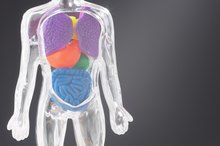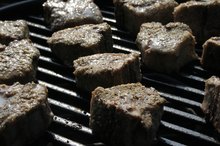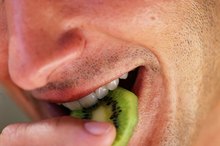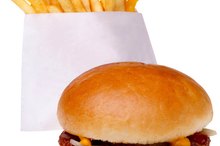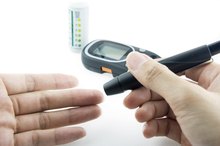Steps of Food Digestion
Digestion is the process in which the body breaks down food into molecules that can be used for nourishment. The stomach is not the only organ involved in the digestion process. A series of organs comprise the human digestive tract, including the mouth, esophagus, stomach, small intestines, liver and large intestine. Each organ in the digestive tract plays an integral part in the digestive process.
Mouth
The digestion process actually begins before food enters your mouth. Inhaling the aromas that emanate from food can cause your mouth to produce saliva, which contains compounds and enzymes that begin to break down food once it enters your mouth. The chewing process makes food particles small enough for the digestive enzymes in saliva to begin their work.
Esophagus
How Are Nutrients Absorbed in the Body by the Stomach?
Learn More
Once food is chewed, it is swallowed and it enters your esophagus. According to the Cleveland Clinic, the esophagus is a muscular tube that carries chewed food to the stomach. The process of transporting food to the stomach via the esophagus requires a series of muscle contractions known as peristalsis.
Stomach
The stomach performs two different functions during the digestion process. The stomach is a large pouch with muscular walls that acts as a holding station for food as well as a food processor. The muscular walls of the stomach churn the food into an liquid-like substance called chyme. Chyme has the consistency of oatmeal. In addition, the stomach secretes additional enzymes and acids that facilitate the breakdown of proteins, fats and alcohol.
Small Intestine
What Are the 19 Steps in the Digestion of Food?
Learn More
Once food is processed in the stomach, it makes its way into the small intestine. The small intestine is approximately 17 feet long and divided into three sections: the duodenum, the jejunum and the ileum. Foods from the stomach enters the duodenum where bile and pancreatic secretions are released to further break down the food. When digested food reaches the ileum, the final part of the small intestine, the nutrients from the food are absorbed into the bloodstream and sent to the liver where they will be stored or sent to other parts of the body.
Liver, Gallbladder and Pancreas
According to KidsHealth.org, the liver, gallbladder and pancreas play vital roles in the digestive process even though they are technically not part of the digestive tract. The liver produces bile, which is an essential compound for the body to absorb fats. The pancreas secretes enzymes that are essential for digesting proteins, carbohydrates and fats. The liver also handles and processes the nutrients that are absorbed from the small intestine.
Large Intestine
The final stage of the digestion process occurs in the large intestine. The large intestine in composed of three parts: the cecum, the colon and the rectum. The role of the large intestine in the digestion process is to absorb all the remaining water from the food and to compact waste into a tight, compact bundle to allow for defecation. Defecation is the process by which solid waste is excreted from the body.
Related Articles
References
Writer Bio
Robert Shifko has more than 17 years' experience in the health care industry. Throughout his career, he has gained experience in pharmacologic research, clinical nuclear medicine, and most recently radiation health physics. He has obtained several certifications in nuclear medicine, epidemiology, biostatistics and as a medical radiation safety officer. He has always supported LIVESTRONG.

